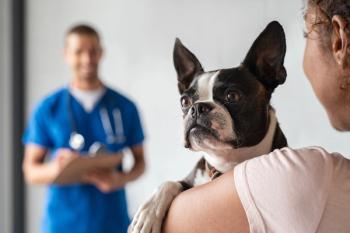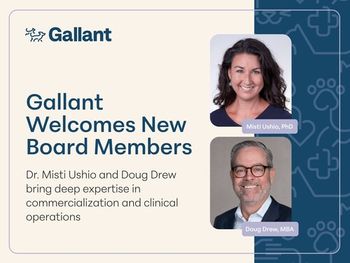
Lessons from an unsellable practice
A hard-working solo veterinarian reaches 67 years of age and wants to sell his practice and retire after 25 years of building it up. It's a no-brainer - or is it?
Ahard-working solo veterinarian reaches 67 years of age and wants to sell his practice and retire after 25 years of building it up. It's a no-brainer — or is it?
He has been bringing in $500,000 in gross revenues for the last three years and has $900,000 in his 401k. There could have been $2 million there, were it not for three kids to send through college and two weddings to engineer.
With the $900,000 earning a reasonable 5 percent return, he is guaranteed (well, almost guaranteed) an income of $50,000 per year for retirement. The good ol' USA's Social Security will put almost $30,000 more into the pot for an income of $80,000. That amount will meet his expenses, but provide little or no money for recreation in his remaining years.
His ace in the hole is his practice.
Now is the time to sell his leased facility for the practice and reap the profits. The problem is that there are few buyers, and those few don't want to pay much because he lives in a western Pennsylvania town just outside Pittsburgh, which has the nation's most declining demographics, second only to post-Katrina New Orleans.
The practice also has profits, but not that much.
Oh, yes, the doctor took an annual salary of some $165,000 in those final years, accounting for 33 percent of his gross revenue, but is that profitable enough for a buyer?
Any prospective buyer would expect to be paid as an associate about 22 percent of production and 3 percent of production for benefits. After deducting 25 percent from his 33 percent take-home before taxes, he shows a profit of 8 percent, or $40,000.
How much would you pay for a business generating $40,000 income at the onset of the "Great Recession?"
It's a risk, and risky investments need a 20 percent to 25 percent return to be worth the heavy capital investment, when a buyer could just work in a large practice and get about 25 percent of his/her production with no gambling involved.
Do the math: $40,000 divided by 0.25 return = $160,000, or just 33 percent of one year's gross.
Did I mention that the new buyer, emulating the seller, would have to spend a minimum of 300 hours a year in managing the new practice without pay?
How could this scenario have been avoided?
The owner could have chosen a more affluent area to open his practice a quarter-century ago, but that would require psychic powers not common in our profession. The much easier solution would have been to charge more for his services.
In our not-so-hypothetical practice, another $100,000 per year would have assured a higher selling price because 80 percent of the increment would have fallen to the bottom line.
Add $80,000 to the $40,000 discussion and you have $120,000 divided by 0.25 = $480,000. That's a much more sellable practice.
How would he have achieved that additional $100,000? By practicing better medicine, that's how. Take a look at the following production report:
• Dentistry was $11,982, or 2.03 percent of gross. That's less than a third of the achievable. Surely, more than 1.2 patients a week needed dentistry.
What was missing was the client's realization that proper dentistry should add about four years to a pet's healthy life. Was the veterinarian using disclosing solution as part of each pet's exam? I doubt it. Was he sending home a dental report card (
• His lab revenues were good at 20 percent of gross or about $120,000 a year, but tripling his dentistry would have added another 120 lab profiles at a minimum of $75 each for another $9,000.
Fortunately, he sent his lab work out, saving a fortune on in-house labor costs. Few practitioners can internalize that you must charge a minimum of $2 a minute for staff labor billable to clients.
• Injections for outpatients and hospitalized patients amounted to a meager 1.3 percent of gross revenues, when 8 percent to 9 percent would have been ideal. Clients absolutely cannot be relied upon to give pills, and any pet with abdominal dysfunction cannot be relied upon to absorb any pills that the clients manage to get into their unwilling pets. Anti-inflammatory injections build up a blood level that can be treated at home.
How many times have you seen a staff member struggle to give a pill when an injection would be a quicker and surer thing? I have always taken the philosophy to heart: A disease treated with medication surer to get into the bloodstream costs the client less because they get their pet home a day or two sooner.
I seldom have seen a sick pet that was not dehydrated. Dehydrated cells do not recover well. BID subcutaneous fluids for sick pets was standard. Yes, those were injections, too. The fee was 65 percent of the office visit plus $4 for up to 40 pounds and $1 for each 10 additional pounds. Did clients complain about injection fees in my 29 years of practice? Yes, there were three complaints. Did the patients feel better sooner and go home sooner? Yup!
My consulting clients are given a well-calculated fee schedule built around what the economy in the five-mile radius for most and a 15-mile radius for rural practices will support for average clients. (See
Average hospital transaction fee (ATF) is gross revenue divided by the number of invoices and assumes 18 percent to 22 percent over-the-counter sales, diets, boarding, etc. These ATF numbers should be no less than three times the office visit and those transactions with a patient present should average about 4.3 to 4.5 times the demo-graphically correct office visit.
Hospitals maintaining these ATF's find willing buyers because they are profitable and sell for just about a year's gross, provided they do not go hog wild over new technology without the client base to support it.
The national average selling price for the average American practice today is less than half of one year's gross. It's all in the management. No surprise there. Recent studies from the National Commission for Veterinary Economic Issues (NCVEI) indicate that the more hours of self-management (by owner), the lower the income per full-time veterinarian and, conversely, a full-time, well-trained manager increases income per full-time veterinarian by much more than the cost of the manager.
Dr. Snyder, a well-known consultant, publishes Veterinary Productivity, a newsletter for practice productivity. He can be reached at 112 Harmon Cove Towers; Secaucus, NJ 07094; (800) 292-7995;
Newsletter
From exam room tips to practice management insights, get trusted veterinary news delivered straight to your inbox—subscribe to dvm360.






